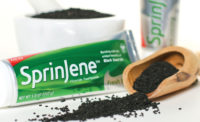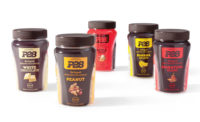For a Successful Brand, Communicate Openly with Customers
For cookie brand Michel et Augustin, every package tells a story.

Michel et Augustin’s informal, doodle-filled packaging, unusual in the gourmet cookie category, at first had retailers and buyers skeptical—but the point of difference has been positive for the brand.

The brand views its packaging as a form of social media. The intriguing designs have customers turning the packs this way and that to read all the messages.




Have I got a story for you. Or rather, Michel et Augustin’s packaging does. Job postings, requests for spaces to rent, rooftop selfies, open house hours and announcements for pastry certification classes in Paris are all shared on the packages of the gourmet pastry brand ran by two childhood friends.
Using day-to-day happenings so publicly has made customers feel like they are part of the brand. And because of those loyal fans, Michel et Augustin has edged out giants including Pepperidge Farm and led France’s premium cookie category.
A Passion for Pastry
In 2001, Augustin Paluel-Marmont completed a pastry course that ignited his passion for baking. Tired of corporate life, he decided to write a guidebook to the best bakeries in Paris. He emailed friends who might be interested in helping and heard back quickly from Michel de Rovira. Together, they set out on a pastry adventure that drastically changed the course of their lives.
The friends began baking in Augustin’s tiny Parisian apartment with two simple goals: to create “supersonic,” indulgent and tasty cookies with simple, all-natural, high-quality ingredients; and to live and share an everyday, real story about passion, pastry and entrepreneurship.
Defy Category Norms, Win Hearts
From the very beginning, the friends’ ownership of their project has flavored the outcome.
“After baking more than 400 batches of cookies and finally finding the perfect buttery shortbread recipe, the first packaging was definitely ‘homemade,’ involving a clear, fairly rigid plastic wrap and a ribbon,” says Paluel-Marmont, co-founder and kooky baker, Michel et Augustin. “Our first customer, Salah, owned the deli underneath my Parisian apartment; Salah is still a customer and huge friend and fan of the Michel et Augustin family. As sales progressed, more official packaging became a need.
“While Michel and I are not artists, we knew what we wanted, so we hired a graphic designer and explained our vision, which was simply to share our kooky adventure. We never wanted to create a brand; we just wanted to tell a story. And our packaging was a great way to share it: Every customer would see it, and we could have full control. To us, it was like owning a newspaper. We wanted there to be pictures, headlines and news bites. Similarly, we wanted to the keep the news as current as possible, so with every print run the news is updated.”
In a category filled with staid designs, Michel et Augustin stuck with its personality and went a different route, one that raised more than a few eyebrows.
“We always wanted the packaging to be eye-catching and colorful on the shelf. At first, however, I’d say that retailers were skeptical. First of all, we were a new brand. But beyond that, our packaging was fun and lively while the cookies were gourmet: We started out with the goal to make “supersonic” cookies made only of all-natural ingredients, and we still do. For example, the entire ingredient list for our Shortbread cookies is unbleached wheat flour, butter, brown cane sugar, egg yolks and eggs, and sea salt. No tocopherols, no soy lecithin, just simple, high-quality, natural ingredients that most people have in their pantry. So, while the packaging is quirky and fun, the quality on the inside is unmistakable.
“Similarly to the trade reaction, consumers were at first a little puzzled by the whimsical packaging among other gourmet cookies with their more serious, classic packages. But the stories did draw them in; the quality gave them confidence; and then the taste won them over, bite by bite.”
After the brand won the hearts of the French, the U.S. market was next on its plate.
“Once again, we were starting from scratch. My colleague Antoine Chauvel, who has been with the company nearly from the beginning, arrived in the U.S. in February 2015. No one knew him; no one knew our brand. He was a stranger in a strange land: the homeland of cookies, no less! With lots of humility but also lots of ambition, he hit the streets. Store by store, door by door, Antoine started selling. He faced the same reaction in the U.S. that we had in France: skepticism, followed by acceptance, followed by enthusiasm.”
By August, Michel et Augustin cookies could be found in more than 500 stores, from grocery chains to high-end independents. In Manhattan’s Bedford Cheese Shop, they caught the eye of a Starbucks buyer, leading to a test run of 25 stores in New York City; then 415 stores in New York, Indianapolis and Philadelphia; and as of January 2016, a national roll-out into 7,624 Starbucks.
Undeniably, the brand’s determination, amazing products and love for its work got it where it is today. But the packaging’s personification of the owners’ personalities plus the brand’s desire to include its customers played no small part.
“When Antoine first arrived in Brooklyn, he rented shared office space. We used our packaging to ask if anyone knew of a space for rent that we could make our own. We also recruit via our packaging. While in the end we don’t usually find hires this way, knowing that we are hiring still invites our customers into our world; they know what we are up to. By the way, we are hiring for Brooklyn: Most of our staff comes from friends who already work in the company, but if you know someone who knows someone who knows someone … please send them our way!
“Most importantly to us, our packaging lets us explain who we are. We want to share our adventure and passion. We want to share our rituals, so that everyone can take part. For example, at our Banana Farms [the brand’s fond name for its offices, based off a scraggly banana tree in Augustin’s Paris apartment] in Paris, Lyon and Brooklyn, we offer pastry certification classes. Maybe someone in Michigan can’t attend, but at least they can learn about it! We also have monthly open houses, on the first Thursday of every month, in our Banana Farms. Maybe the next time that someone visits Brooklyn, they will join us; we would love that! Our packaging was an early form of social media. And we have a lot of fun with it: When we post on Facebook asking our community their opinions about our packaging or ideas for it, we get thousands of responses.”
In terms of feasibility, the brand says the constant redesigning plus small print runs are considerable costs. But, rather than advertise, Michel et Augustin sees packaging as one of the most intimate ways to tell its story.
“Our team of designers in our Paris Banana Farm is very busy; they sit on the ground floor, just to the left of the entrance, in the very heart of things. From packaging to brochures to our social media sites, they design it all. We are always moving, always improving: Nothing is ever fixed into place. We abhor dogma and are always looking for new ways to do things better. Packaging will always be an important path toward our objectives.”
Sweet Success
In just ten short years from launch, Michel et Augustin became France’s premium cookie leader, with 24.8 percent market share and $35 million in net sales, a figure that is particularly impressive considering the small size of the French market. Michel et Augustin recipes have been exported to 23 European and Asian countries as well, and the brand has already found a firm place in the U.S.
“Remember that your packaging is usually your first contact with any potential customer,” says Paluel-Marmont. “Do as much internally as you can, so that your packaging really reflects you and your company, not someone else’s vision of you. Be yourself, which will automatically make you different than everyone else. Promise your reality. And importantly, the impossible is possible!”
Looking for a reprint of this article?
From high-res PDFs to custom plaques, order your copy today!










